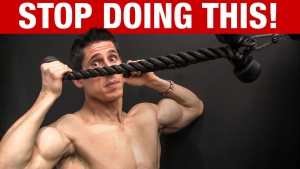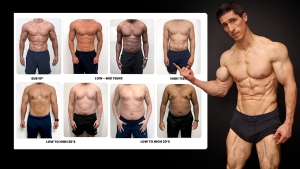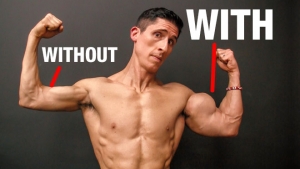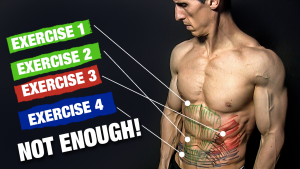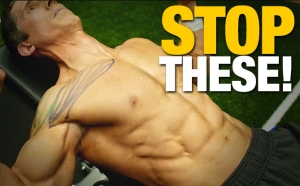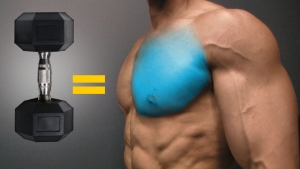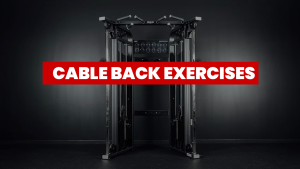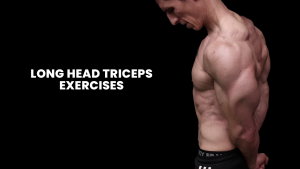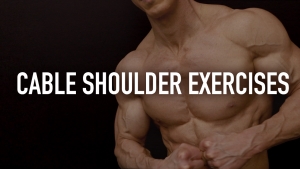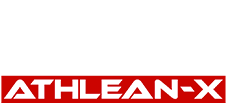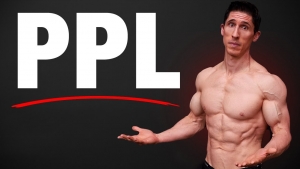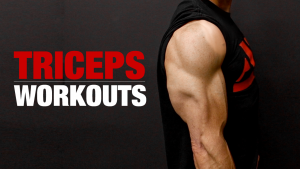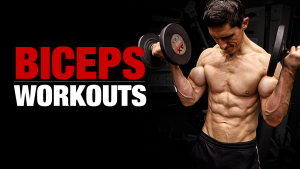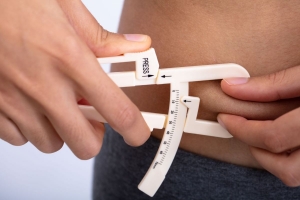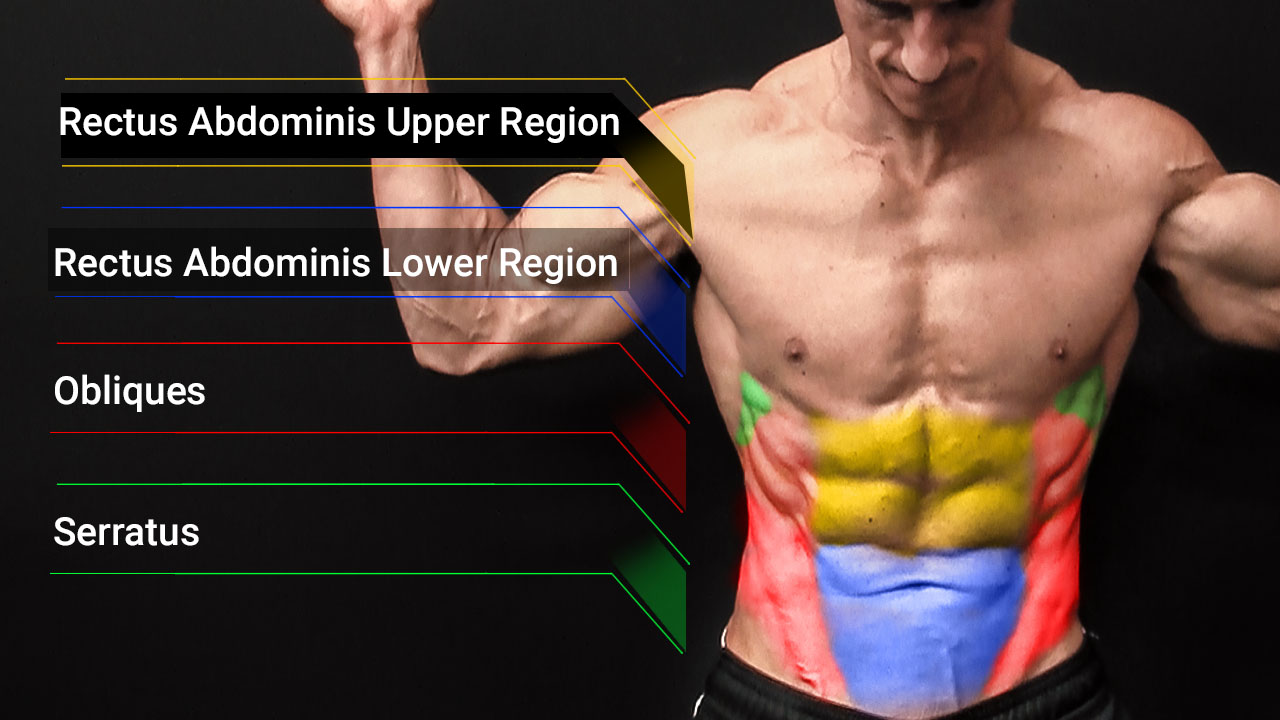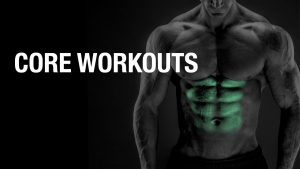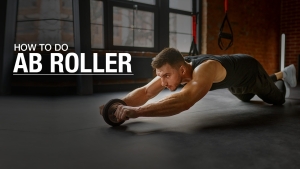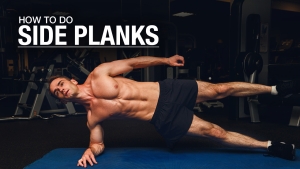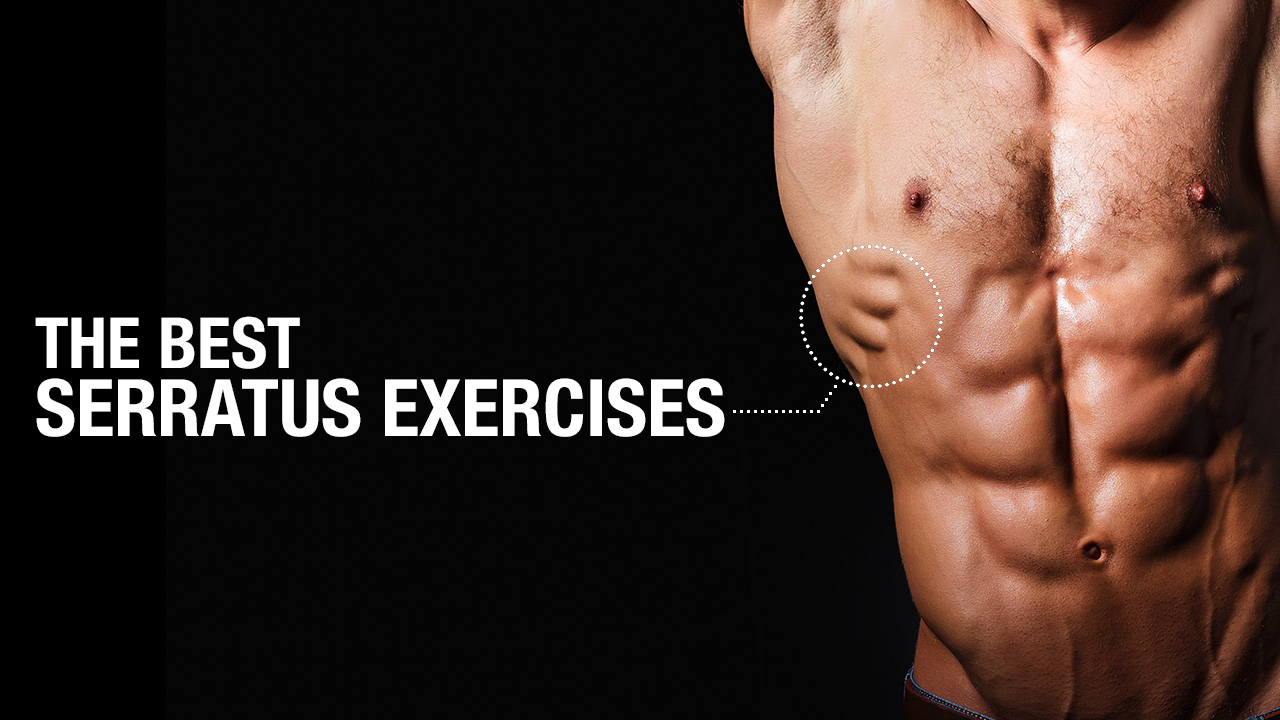
WHY YOU SHOULD TRAIN THE SERRATUS
Guys, do you want a shredded serratus?
No, that’s not a breakfast cereal. The serratus is an all-too important muscle to help you build strong core muscles, powerful shoulders, and bulletproof stability.
Right now, most of you are ignoring this muscle.
And by skipping out on serratus anterior exercises, you’re missing out on both athletic and aesthetic benefits.
On one hand, you’re setting yourselves up for shoulder pain, scapular winging, and weak overhead movements that’ll kill your gains and wreck your scapular stability.
On the other, you’ll never achieve a fully shredded core no matter how many crunches you’re doing.
Today, I’m going to show you the most effective exercises that target the serratus anterior, correct scapular dysfunction, and restore the balance of serratus strength.
Whether you’re dealing with a winged scapula, shoulder impingement, or just want a more defined core, it all starts here.
WHAT IS THE SERRATUS ANTERIOR?
Some of you might not even know what the serratus anterior is. But I can guarantee it’s a critical muscle in your core.
And if you’re not training it, you’re lacking shoulder stability, overhead mobility, and core strength.
Now, let’s clear something up: when people hear the word core, they immediately think abs but that’s just one small piece of the puzzle.
Your core region includes every muscle that connects your shoulder complex to your hips, controlling scapular motion, shoulder movement, and upper body functions.
The serratus anterior is a major player in that system, keeping your scapula, rib cage, and upper body movement in check.
LOCATION AND STRUCTURE

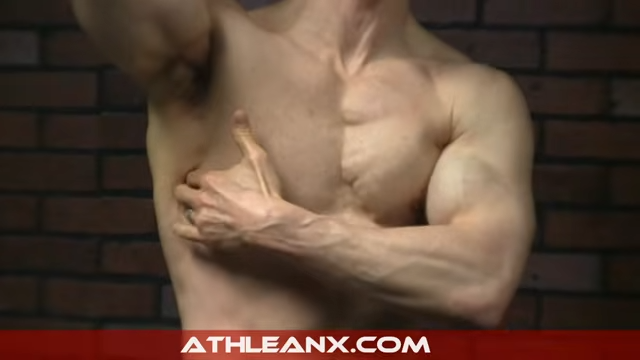
The serratus anterior is a fan-shaped muscle that sits along the sides of your rib cage, just underneath your pectoral muscles and external obliques.
It attaches at the medial border of the scapula and extends forward, anchoring itself to the upper ribs.
You can see it in action when someone raises their arms or throws a punch. This is when it creates that ripped, claw-like appearance on the sides of a well-defined torso.
But this isn’t just for aesthetics.
This muscle is responsible for scapular stability, coordinated movement of the shoulder girdle, and controlling the positioning of your shoulder blades during overhead activities.
It works in concert with muscles like the trapezius, levator scapulae, and rotator cuff tendons to maintain proper scapular kinematics and prevent scapular dysfunction.
FUNCTION AND IMPORTANCE
The serratus anterior is often called the “puncher’s muscle” because its primary job is scapular protraction or pulling the scapula forward and wrapping it around the rib cage.
This action is crucial for movements like:
- Punching (hence the name)
- Pushing (think Scapular Pushups and Wall Slides)
- Overhead movements (lifting weights, throwing, reaching)
It also plays a key role in scapular upward rotation actions, ensuring smooth shoulder movement when raising your arms above shoulder height.
Without a strong serratus, you’re looking at shoulder impingement, winged scapula, and a weak foundation for overhead shoulder stability.
WHY YOU NEED TO TRAIN IT
A weak serratus anterior means poor scapular control, limited range of motion, and increased risk of shoulder pain and dysfunction.
It’s also a common culprit behind shoulder instability, rounded shoulders, and even thoracic outlet syndrome.
If you’re serious about building a strong core, bulletproofing your shoulders, and unlocking your full upper body potential, then training this critical muscle is non-negotiable.
BEST SERRATUS ANTERIOR EXERCISES
If you want shoulder stability, overhead mobility, and a core that looks like it was chiseled out of stone, you need to train the serratus anterior.
Today, we’re targeting your serratus anterior with the best exercises to build scapular control, improve upward rotation, and eliminate dysfunction.
These moves will help you upgrade your shoulders, increase your range of motion, and even enhance your aesthetic benefits by giving your core that defined, armor-plated look.
Let’s dive into the most effective exercises to strengthen your serratus anterior and take your upper body performance to the next level.
PUSH-UP PLUS

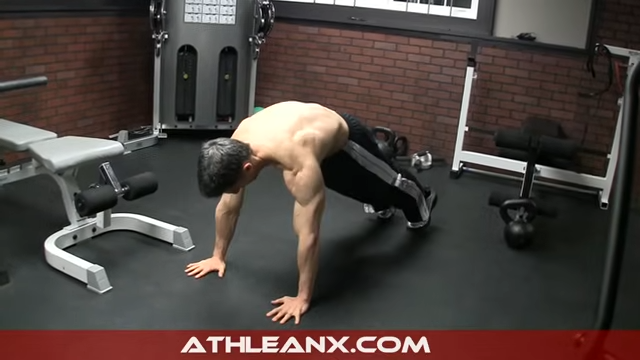
HOW TO DO THE PUSH-UP PLUS:
- Start in a Regular Push-Up position with your hands just outside shoulder width, body in a straight line from head to heels, and core engaged.
- Lower yourself as you would in a Standard Push-Up, keeping your shoulder blades stable and elbows tracking naturally.
- Press back up to the top, fully extending your arms.
- Here’s the Plus: At the top, push even further into the ground, actively protracting the scapula. Imagine pushing your shoulder blades forward, wrapping them around your rib cage to activate the serratus anterior.
- Pause for a second, then reset back to the starting position and repeat.
WHAT MAKES IT EFFECTIVE: This push-up exercise is an optimal movement that directly targets the serratus anterior, training its primary function, which is scapular protraction. By adding that extra reach at the top, you force the fan-shaped muscle to engage fully, reinforcing scapular control, shoulder blade stability, and better posture.
PLANK PLUS

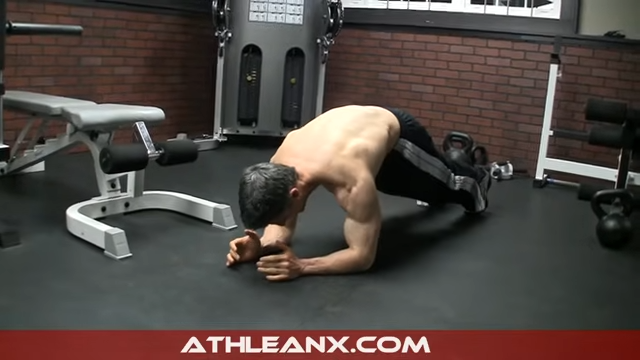
HOW TO DO THE PLANK PLUS:
- Get into a Plank position with your elbows directly under your shoulders, body in a straight line from head to heels, and core braced.
- Let your shoulder blades collapse slightly. This allows your rhomboids to pull together, causing a slight pinch in the scapula.
- Now, push through your forearms. Actively protract your shoulder blades, wrapping them around your rib cage and engaging your serratus anterior fully.
- Repeat the motion. Let your scapula retract, then drive up and out again, maintaining control.
WHAT MAKES IT EFFECTIVE: Unlike a Push-Up Plus, where your hands and shoulders help stabilize the movement, the Plank Plus forces your serratus anterior to handle more body weight, making it a much more intense exercise. You’ll feel fatigue kick in fast, not just in your shoulders, but deep in your core region too.
BOXER’S PUNCH PLUS

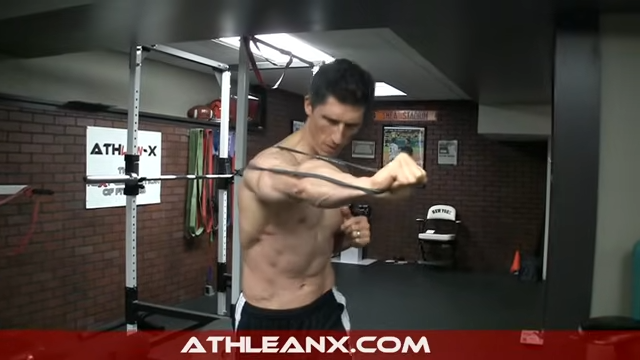
HOW TO DO THE BOXER’S PUNCH PLUS:
- Anchor your resistance bands to something stable. Anchor it at chest height, grab the handle, and step forward so there’s tension in the band.
- Get into a boxing stance with one foot slightly ahead of the other, core engaged, and shoulders squared.
- Punch forward, but don’t stop there. Extend through the punch, allowing your shoulder blades to protract fully. Think about wrapping your scapula around your rib cage as you reach.
- Add rotation and turn your torso and hips into the punch to engage your scapular muscles, core, and obliques.
- Control the return and bring the arm back with control, resetting for the next rep.
- Repeat on both sides.
- Balance is key here. Work both arms to develop strong serratus activation on both sides.
WHAT MAKES IT EFFECTIVE: This move does more than just train your serratus anterior. It integrates scapular control, shoulder stability, and rotational core strength in one explosive movement. Boxers do this naturally with every punch, but even if you’re not stepping into the ring, this is a must-have exercise for anyone who wants better scapular motion, stronger overhead movements, and more powerful athletic performance.
APPLE PICKERS

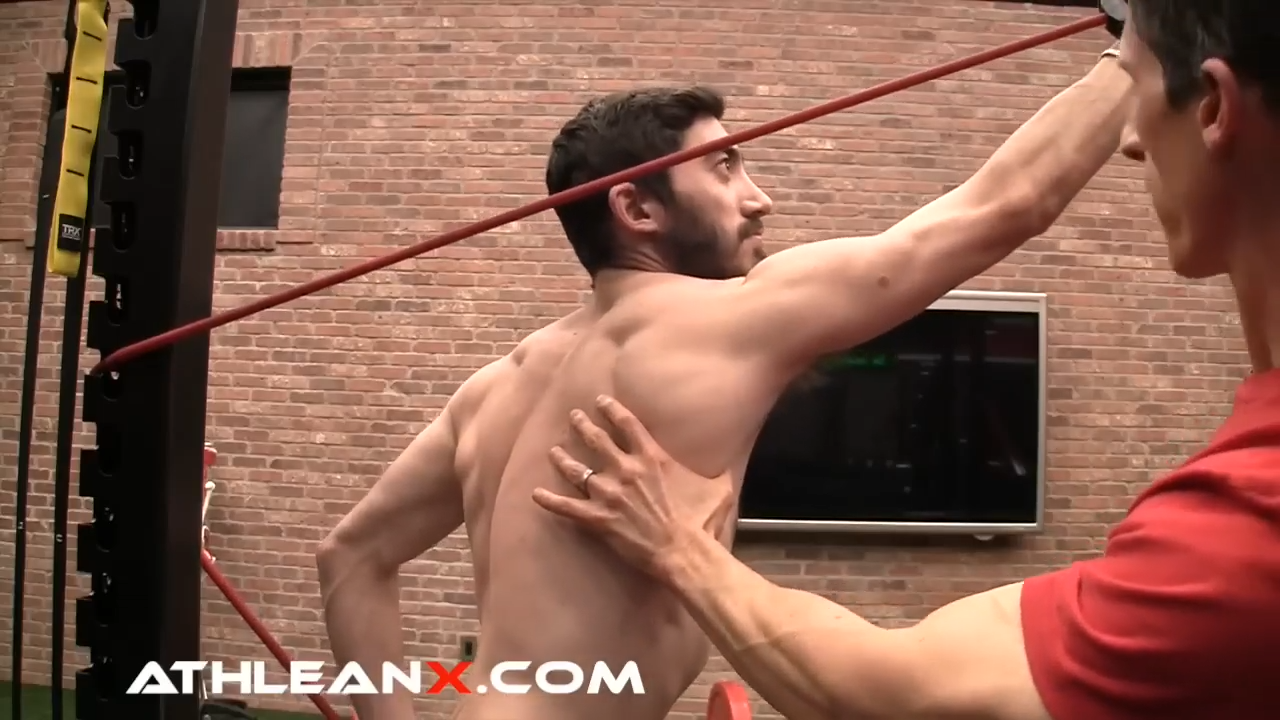
HOW TO DO APPLE PICKERS:
- Set up a resistance band and anchor it behind you at about shoulder height, making sure it’s secure on something sturdy.
- Stand tall, core engaged. Don’t lean, don’t twist. Keep your body stable as you reach.
- Reach forward and up. Extend your arm in front of you as if you’re reaching for an apple on a tree.
- Focus on pushing through your scapula, allowing your shoulder blades to protract fully.
- As you “grasp” the apple, don’t lose tension. Your serratus anterior is still working.
- Lower with control. Slowly bring your hand down while maintaining scapular protraction.
- Do not let your shoulder blade retract too early. Instead, control the eccentric contraction all the way down.
- Once your hand is at your side, reset and go again. Each rep should be deliberate and isolated.
WHAT MAKES IT EFFECTIVE: The Apple Picker isn’t just about movement. It’s about neuromuscular education. If your serratus anterior has been dormant for years due to poor scapular mechanics, weak overhead movements, or shoulder dysfunction, this exercise forces it to wake up and function correctly.
LEAN BACK PUSH-UPS

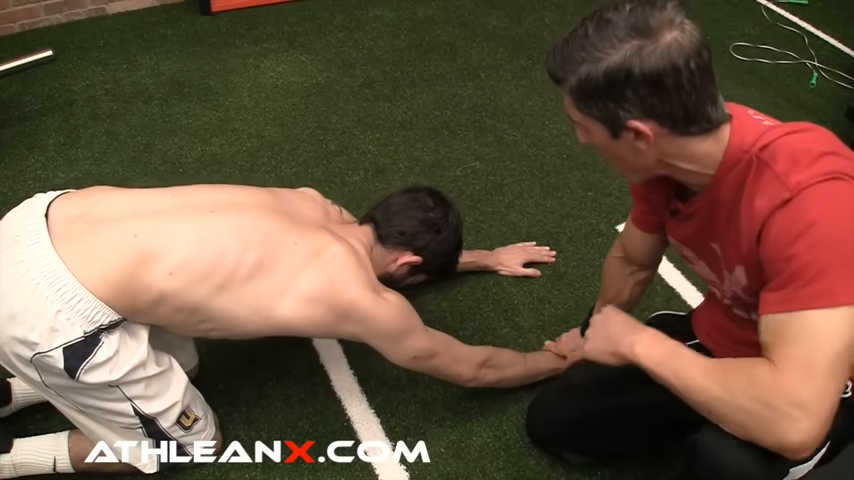
HOW TO DO LEAN BACK PUSH-UPS:
- Start in a push-up position with your hands just outside shoulder width, core engaged, and back neutral.
- Perform a Push-Up Plus. Press through your shoulder blades, wrapping them around your rib cage. This is your starting position.
- While maintaining shoulder protraction, begin shifting your weight backward toward your heels, letting your arms elevate slightly over your head.
- As you lean back, actively press into the floor, pushing your shoulder blades even further forward. The goal is to engage the serratus anterior as much as possible.
- Shift your weight forward and reset. Each rep should be controlled, emphasizing quality over quantity.
WHAT MAKES IT EFFECTIVE: This move forces upward rotation of the scapula, mimicking the motion needed for overhead movements, athletic activities, and strong, stable shoulder mechanics. By pressing through the ground and leaning back, you drive serratus activation while keeping your scapula engaged throughout the movement.
PROTRACTED BAND PULL APARTS

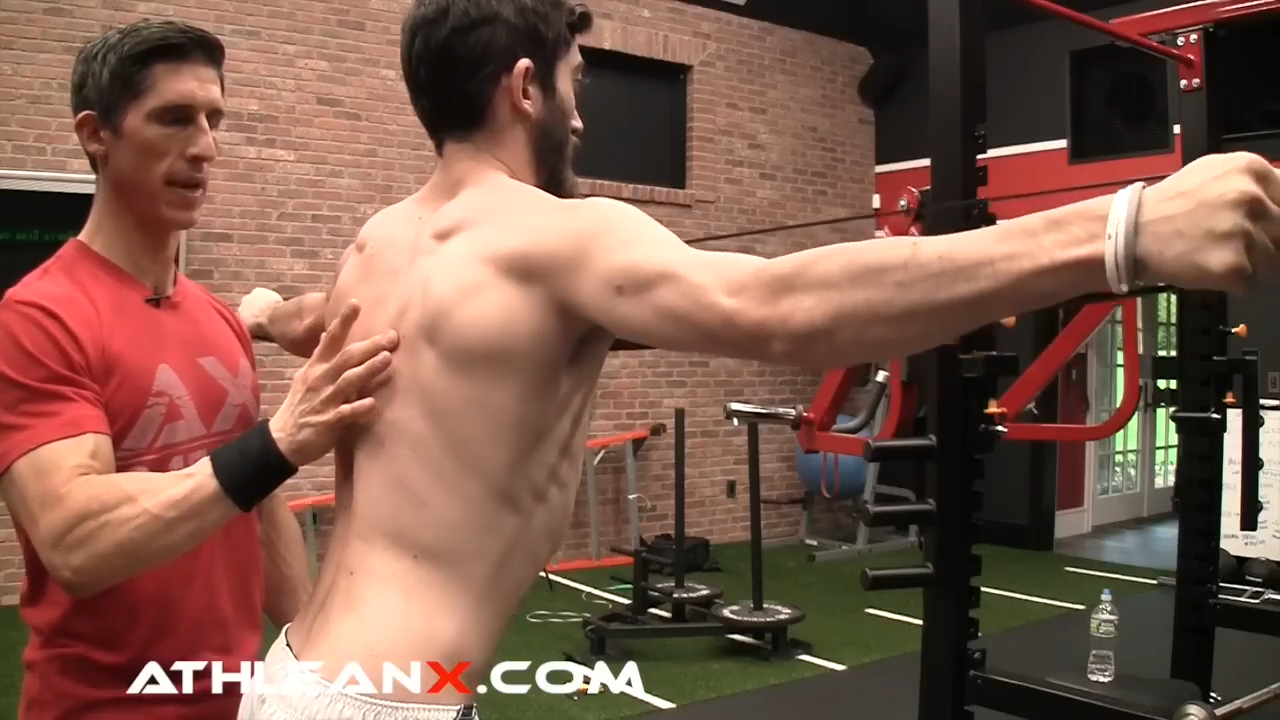
HOW TO DO PROTRACTED BAND PULL APARTS:
- Grab a resistance band and hold it with both hands at shoulder height, keeping slight tension on the band.
- Push your shoulder blades forward, just like in a Push-Up Plus. Your arms should be slightly in front of your body, not locked back.
- While keeping your scapula in protraction, pull the band outward until your arms are wide.
- Instead of just letting the band snap back, slowly bring your arms forward, keeping that serratus engagement the entire time.
- Focus on quality reps, not rushing through them. Keep your scapula forward and resist the urge to let your shoulder blades retract like a regular pull-apart.
WHAT MAKES IT EFFECTIVE: The serratus anterior is all about scapular protraction and this move forces it to stay engaged through the entire range of motion. This directly improves scapular winging, weak serratus activation, and overall shoulder function.
WALL SCREWS

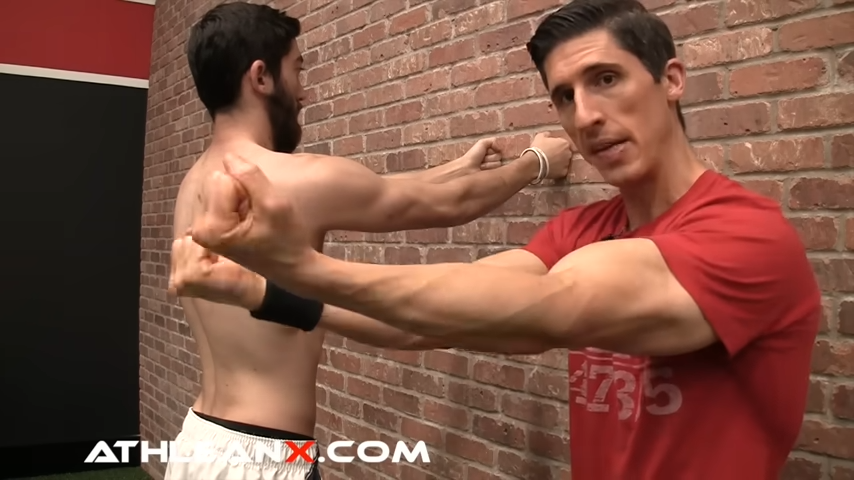
HOW TO DO WALL SCREWS:
- Stand facing a wall, placing your hands at shoulder height with your palms flat against it.
- Instead of rounding your thoracic spine, focus on pressing your shoulder blades forward, keeping your core engaged and back straight.
- Once protracted, externally rotate your arms by twisting them outward as if you’re “screwing” into the wall. This reinforces scapular stability and locks in the serratus activation.
- Bring your hands back to the starting position, maintaining control throughout the movement.
WHAT MAKES IT EFFECTIVE: The Wall Screws combine scapular protraction with external rotation, reinforcing shoulder joint stability, scapular motion, and serratus engagement. This move is excellent for preventing shoulder impingement, improving overhead mobility, and fixing winged scapula.
DIP PLUS

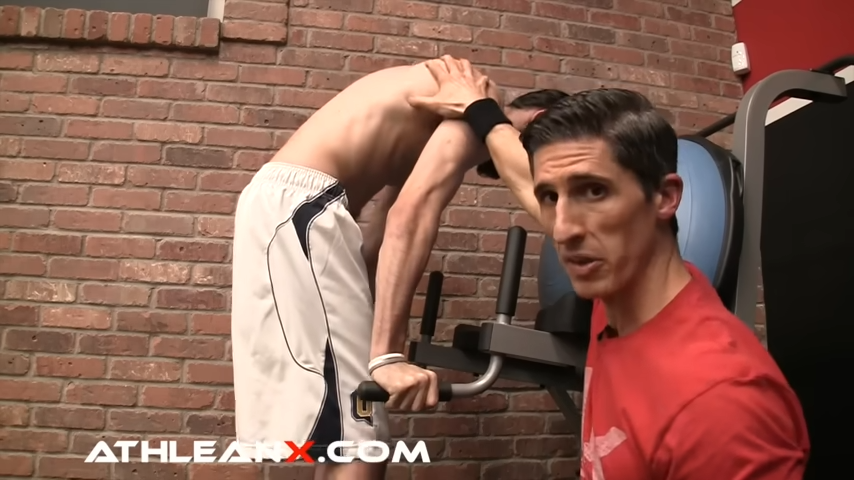
HOW TO DO THE DIP PLUS:
- Get into a dip position with your hands firmly on the dip bars, arms locked out, body straight, and shoulders engaged.
- Lean forward slightly. This shifts the focus from just your triceps and chest to your scapular muscles and serratus anterior.
- Protract the scapula. Without bending your arms, push your shoulder blades forward, allowing your serratus to fully engage.
- Stay in this isometric hold for 5-10 seconds, keeping your core tight and resisting the urge to just lift with your abs.
- Lower your shoulders back into the starting position, then repeat for several high-quality reps.
WHAT MAKES IT EFFECTIVE: The Dip Plus reinforces serratus activation, scapular control, and overall shoulder stability. Plus, the isometric hold builds neuromuscular control, helping to wake up a dormant serratus and integrate it into overhead movements and pressing exercises.
STRAIGHT ARM PUSHDOWNS (FOR SERRATUS)

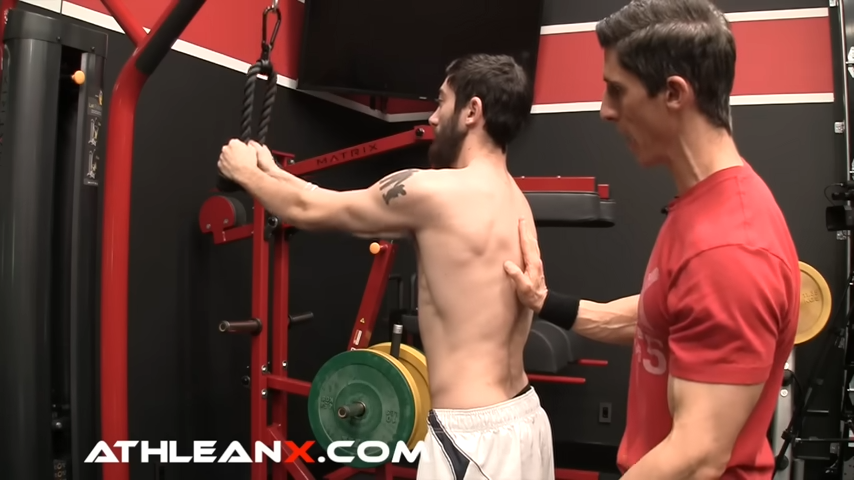
HOW TO DO STRAIGHT ARM PUSHDOWNS:
- Set up a cable machine and attach a rope handle to a high pulley and select a challenging weight that allows proper form.
- Stand tall with a neutral spine. No rounding your thoracic spine here. Keep your core tight, chest up, and feet shoulder-width apart.
- With your arms straight, initiate the movement by pushing the rope down and forward, focusing on scapular protraction.
- As you press downward, imagine your scapula wrapping around your rib cage, reinforcing serratus engagement.
- Bring your arms back up under control, maintaining tension in your serratus and scapular muscles throughout the movement.
WHAT MAKES IT EFFECTIVE: Unlike earlier serratus activation drills, the Straight-Arm Pushdown allows you to load up more weight, reinforcing strength in a functional, resistance-based movement. It mimics the scapular motion used in pressing, overhead lifts, and core stabilization, making it one of the best serratus-building movements for both athletic performance and shoulder stability.
SERRATUS ANTERIOR EXERCISES: COMMON MISTAKES
You’ve got the best serratus anterior exercises in your arsenal now but if you’re making these common mistakes, you’re wasting reps and reinforcing poor shoulder mechanics instead of building strong, stable scapular control.
Let’s go over the biggest serratus anterior mistakes, why they’re holding you back, and how to correct them for maximum gains in scapular function, shoulder health, and upper-body strength.
RELYING ON YOUR SPINE INSTEAD OF YOUR SERRATUS
One of the biggest mistakes people make, especially in Wall Screws, Apple Pickers, and Protracted Band Pull-Aparts is rounding the thoracic spine instead of isolating scapular movement.
This means you’re compensating with thoracic flexion rather than engaging the scapulothoracic muscles to properly protract the scapula.
Keep your head neutral, thoracic wall strong, and core engaged. Focus on initiating scapular protraction without excessive spinal movement.
SKIPPING THE FULL PROTRACTION
If you’re doing Push-Up Plus, Plank Plus, or Dip Plus but stopping the movement too soon, you’re only half-engaging the serratus anterior.
The whole point of these exercises is to drive the scapula forward, wrapping it around the rib cage, not just locking out your elbows and calling it a day.
Think about pushing the floor away in scapular push-ups, planks, and dips, ensuring that scapular motion extends fully. You should feel the fan-shaped muscle working under your pec minor and lateral rib cage.
TURNING IT INTO A LAT OR PEC-DOMINANT MOVEMENT
When performing Straight-Arm Pushdowns, Boxer’s Punch Plus, or Apple Pickers, some people let the pec minor and lats take over instead of activating the serratus anterior.
This happens when you overuse the deltoid muscle activity or fail to keep proper scapular protraction throughout the movement.
Focus on the primary function of the serratus anterior, which is scapular protraction and upward rotation, not just pushing weight down or forward.
Maintain eccentric control and avoid relying too much on the internal rotators like the pec minor.
NOT CONTROLLING THE ECCENTRIC PHASE
In movements like Apple Pickers, Protracted Band Pull-Aparts, and Straight-Arm Pushdowns, most people rush through the eccentric portion instead of controlling the downward movement.
This reduces activation and limits strength development, especially in dynamic control of the serratus anterior.
Slow it down. The negative phase is just as important as the push. Keep tension on the scapulothoracic muscles and allow the humeral head to stay properly aligned through degrees of shoulder flexion.
IGNORING PROPER SHOULDER BLADE POSITIONING
If you’re pulling your scapula back when performing Protracted Band Pull-Aparts or Boxer’s Punch Plus, you’re turning the exercise into a rhomboid and trapezius exercise rather than focusing on serratus activation.
Instead of scapular retraction, focus on keeping the angle of scapula in protraction through the movement. Your shoulder blades should stay wrapped around the rib cage, not squeezed together.
USING TOO MUCH WEIGHT TOO SOON
Exercises like the Straight-Arm Pushdown and Dip Plus allow for heavier loads, but if you jump straight into heavy resistance without building proper neuromuscular control, you’re setting yourself up for muscle weakness, thoracic nerve strain, or even rotator cuff injuries.
Master scapular push-ups and plank variations first. Once you have full scapular control, gradually increase resistance while maintaining quality movement patterns.
NOT TRAINING THE SERRATUS ENOUGH
The serratus anterior is one of those forgotten muscles until shoulder instability, weakness, or impingement kicks in.
If you’re only hitting your big pushing muscles and ignoring the smaller stabilizers, you’re creating muscular imbalances that will limit your overhead mobility and scapulohumeral rhythm.
Incorporate serratus anterior exercises into your routine two or three times per week, especially if you do a lot of pressing, overhead activities, or intense athletic movements.
Most guys train chest, shoulders, and abs, but ignore the muscle that ties it all together: the serratus anterior.
You probably don’t even think about it, but if you’re skipping it, you’re setting yourself up for weak shoulders, poor overhead mobility, and a core that’s never going to look fully developed.
Train your serratus the right way, and you’ll unlock better performance, stronger shoulders, and a core that actually pops while avoiding the shoulder instability and pain that wreck most lifters.
Check out our complete line of ATHLEAN-RX Supplements and find the best training program for you based on your fitness level and goals.
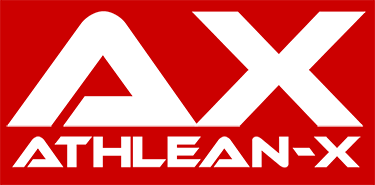
- Skip the serratus anterior, and you’re setting yourself up for a weak shoulder complex, poor overhead mobility, and an underdeveloped core.
- Train it right, and you’ll build stronger shoulders, better performance, and a core that actually pops while avoiding shoulder instability and pain.
- Sitting along the rib cage, this fan-shaped muscle controls scapular motion, allowing for punching, pushing, and smooth overhead movements.
- To target the serratus anterior, I recommend the following exercises: Push-Up Plus, Plank Plus, Boxer’s Punch Plus, Apple Pickers, Lean Back Push-Ups, Protracted Band Pull-Aparts, Wall Screws, Dip Plus, and Straight-Arm Pushdowns.
- If you’re making common mistakes like rounding your thoracic spine, skipping full scapular protraction, or letting your pecs and lats take over, you’re wasting reps and not actually strengthening your serratus anterior.
- The key is to control the eccentric phase, avoid using too much weight too soon, and focus on scapular motion, not retraction, to fully activate the muscle.
- Train your serratus consistently, fix these errors, and you’ll build stronger shoulders, better overhead mobility, and a rock-solid core while avoiding shoulder instability and pain.
SERRATUS EXERCISES FAQS
If you want strong, stable shoulders and a shredded core, you need to train the serratus anterior, not just hope it fires up on its own.
The sweet spot for hitting this critical muscle is in scapular protraction, meaning you’re actively wrapping your scapula around the rib cage while keeping adequate control over your shoulder muscles and glenohumeral joint.
The best serratus anterior exercises include:
Push-Up Plus - This variation goes beyond a regular push-up by forcing scapular protraction, reinforcing overhead shoulder mobility and biomechanical function.
Plank Plus – Engages your core and hip function while isolating the serratus for a full-body treatment against weak shoulders and poor arm motion.
Boxer’s Punch Plus – A dynamic movement that mimics intense activities, improving lateral rib cage mobility and teaching your scapula to move with power.
Straight-Arm Pushdowns – A great overload movement that strengthens the serratus anterior while improving shoulder internal stability at arms at shoulder level.
No matter your body type, if you’re not training the serratus anterior, you’re missing out on tons of benefits including better posture, stronger shoulders, and injury prevention.
If your serratus anterior is weak, then your shoulder stability, overhead mobility, and scapular control are all suffering. That’s a recipe for shoulder pain, poor posture, and even nerve issues.
The fix? You need targeted exercises that force your scapula to protract and rotate properly.
Start with activation drills like the Push-Up Plus, Plank Plus, and Protracted Band Pull-Aparts to build neuromuscular control.
Once you've woken up the muscle, move on to strength-focused movements like Straight-Arm Pushdowns, Dip Plus, and Boxer’s Punch Plus to reinforce scapular function under load.
Train it two to three times per week, and don’t skip the eccentric phase since slowing down on the way back ensures adequate control and strength development.
A weak serratus anterior isn’t just a missing piece of your aesthetics. It’s a functional disaster waiting to happen.
The biggest red flag? Scapular winging, which is when your shoulder blades stick out instead of staying flush against your rib cage.
Other symptoms include:
Poor Overhead Mobility: Struggling to lift your arms at shoulder level or overhead? Your scapula isn’t moving properly.
Shoulder Instability & Pain: If your glenohumeral joint feels shaky or painful during pressing or overhead movements, weak scapular muscles could be the culprit.
Compensations & Bad Posture: Rounded shoulders, excessive use of the trapezius muscle, and even thoracic nerve injuries can stem from a weak serratus anterior.
Fix it now before it leads to bigger issues like impingements, rotator cuff injuries, or chronic shoulder pain.
Most people have zero control over their serratus anterior, which is why it’s weak in the first place.
The key to activation? Protraction.
You need to teach your scapula to move properly without compensating with your traps or lats.
Here’s how to wake up your serratus anterior:
Push-Up Plus: At the top of each push-up, push even further to drive scapular protraction.
Wall Screws: Keep your border of scapula flush while adding external rotation for extra control.
Apple Pickers: Reach forward and up, forcing scapular motion in a controlled, loaded position.
Plank Plus: Keeps the core engaged while isolating serratus activation.
Master these drills before loading up heavier with Straight-Arm Pushdowns or Dip Plus, and you’ll restore full function, improve posture, and eliminate shoulder instability for good.
REFERENCES
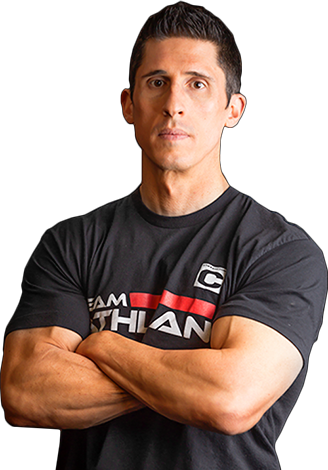
Jeff Cavaliere M.S.P.T, CSCS
Jeff Cavaliere is a Physical Therapist, Strength Coach and creator of the ATHLEAN-X Training Programs and ATHLEAN-Rx Supplements. He has a Masters in Physical Therapy (MSPT) and has worked as Head Physical Therapist for the New York Mets, as well as training many elite professional athletes in Major League Baseball, NFL, MMA and professional wrestling. His programs produce “next level” achievements in muscle size, strength and performance for professional athletes and anyone looking to build a muscular athletic physique.
